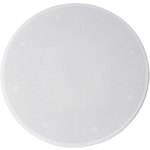Speaker system types
Public address systems
A public address system is a means of sound reinforcement for relating speech and audible information to a group of people. The setup may vary from a single portable amplifier in a small room to an intricate multi-room zoned system with multiple speaker arrays.
Since each public address venue will have its own characteristics, there are many different speaker types and installation methods depending upon the architecture of the building, ambient noise levels and coverage requirements. The key demands from any public speaker are efficient speech delivery and wide area coverage.
Typical venues include: schools/universities, medical centres, market halls, airports, train stations and places of worship.

Background music systems
Generally, background music is a term used for pleasant and unobtrusive playback of recorded material. Many public buildings benefit from background music systems to help create an ambience or mood for their service users. These systems may be tailored to each building and its function in much the same way as with public address systems.
The main difference is that full range audio quality is imperative with background music in order to make it listenable and inoffensive, which is not necessarily a key requirement for basic speech delivery.
Applications include: bars, retail outlets, restaurants, galleries, museums and leisure centres.

Outdoor & weatherproof systems
Some public address and background music components are designed for use in outdoor or damp environments. The materials used and construction methods help to make them weather resistant and able to withstand outdoor conditions.
The main factors to be taken into account when planning outdoor or weatherproof systems are safety and durability of the electrical components to be used within the proposed environment. This includes any of the equipment exposed to the potentially damaging elements including speakers, transformers, cabling and connectors. Mixers and amplifiers are more often sited in an indoor environment.
Typical environments include: patios, auction sites, arenas, theme parks, marinas and swimming pools.

Installation considerations
Do not run microphone cables near mains, data, telephone or 100V line cables.
Do not run 100V line cables near data, telephone or other low voltage cables.
Do not exceed 90% of the amplifiers output power when using 100V line (speech only).
Do not exceed 70% of the amplifiers output power when using 100V line (high level background music).
Do not use re-entrant horn loudspeakers for background music unless the loudspeaker has been specifically designed for this purpose.
Avoid jointing microphone cable. When this is unavoidable make sure a good screened connector is used (eg: XLR).
Always use a balanced or floating low impedance microphone terminating into a balanced input on long microphone cable runs.
Ensure that all loudspeakers are in-phase.
Ensure that there are no short circuits on the loudspeaker line before connection to the amplifier.
For outdoor, humid or dusty environments, ensure that the speaker units used have an adequate IP rating for protection, and that all amplifiers and rack components are completely sheltered from ingress.
Secure amplifiers and other rack components in an appropriate case or cablinet capable of supporting the weight and giving adequate cooling ventilation.
Ensure correct AC voltage and adequate current rating at the mains supply for all amplifiers and rack components.
Only use the mains leads supplied with equipment or of equal compliance and current capacity.
Fix all speaker components securely to walls and ceilings using appropriate fixings for the substrate, and employ safety wires wherever possible.

Contents
Related Items

Pack of 10 Black Replacement Grilles for KV and LP Ceiling Speakers
KV6 or LP6V
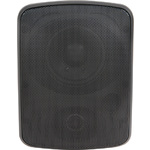
FC Series Compact Background Speakers
3.5" Black each
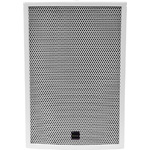
CS Series Wooden Installation Speakers
8" White
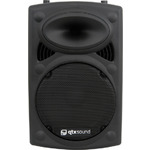
QR Series Passive Moulded PA Speaker Boxes
12"
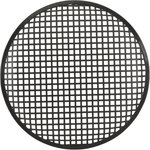
Metal Speaker Grilles
300mm (12")
